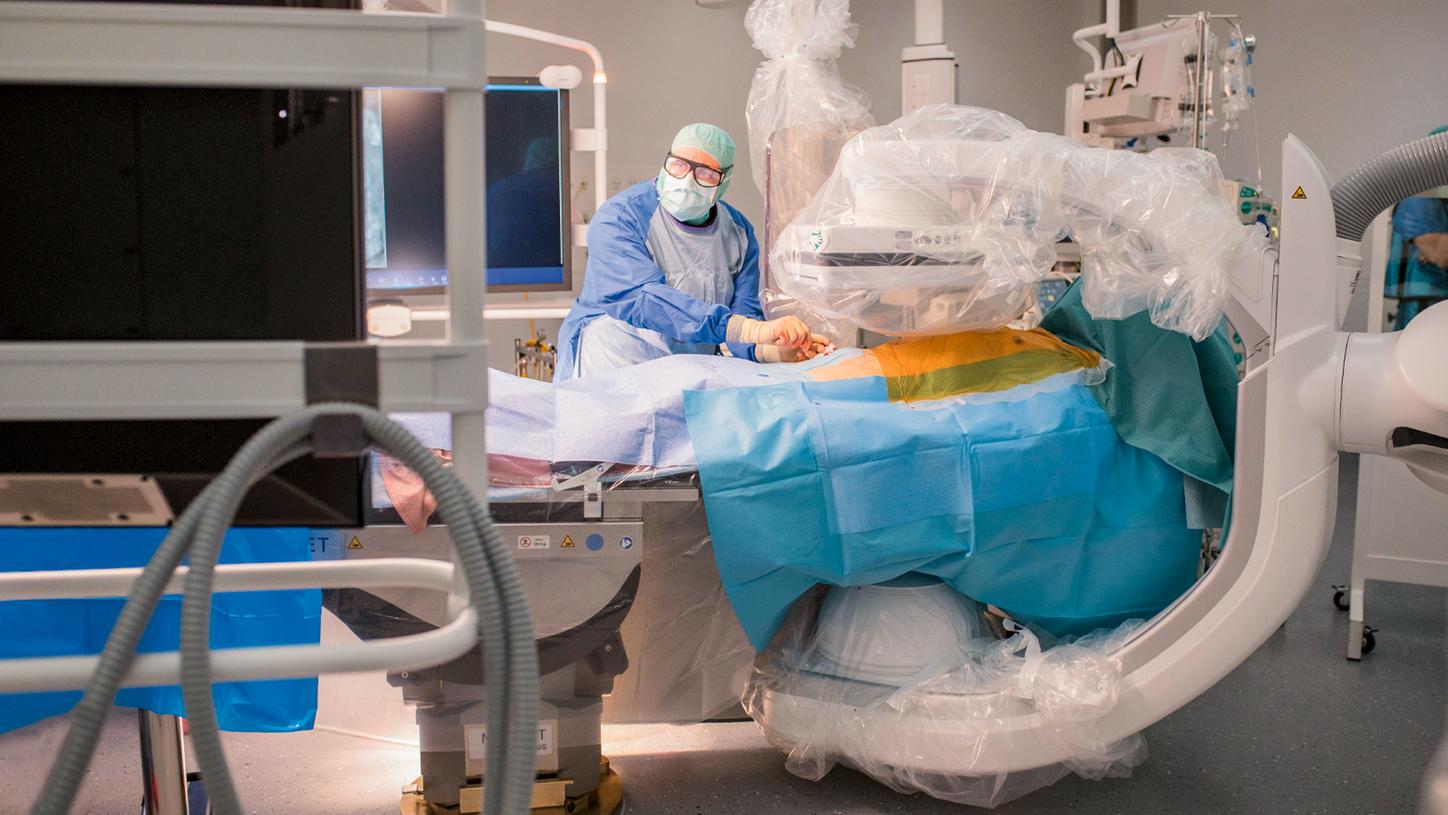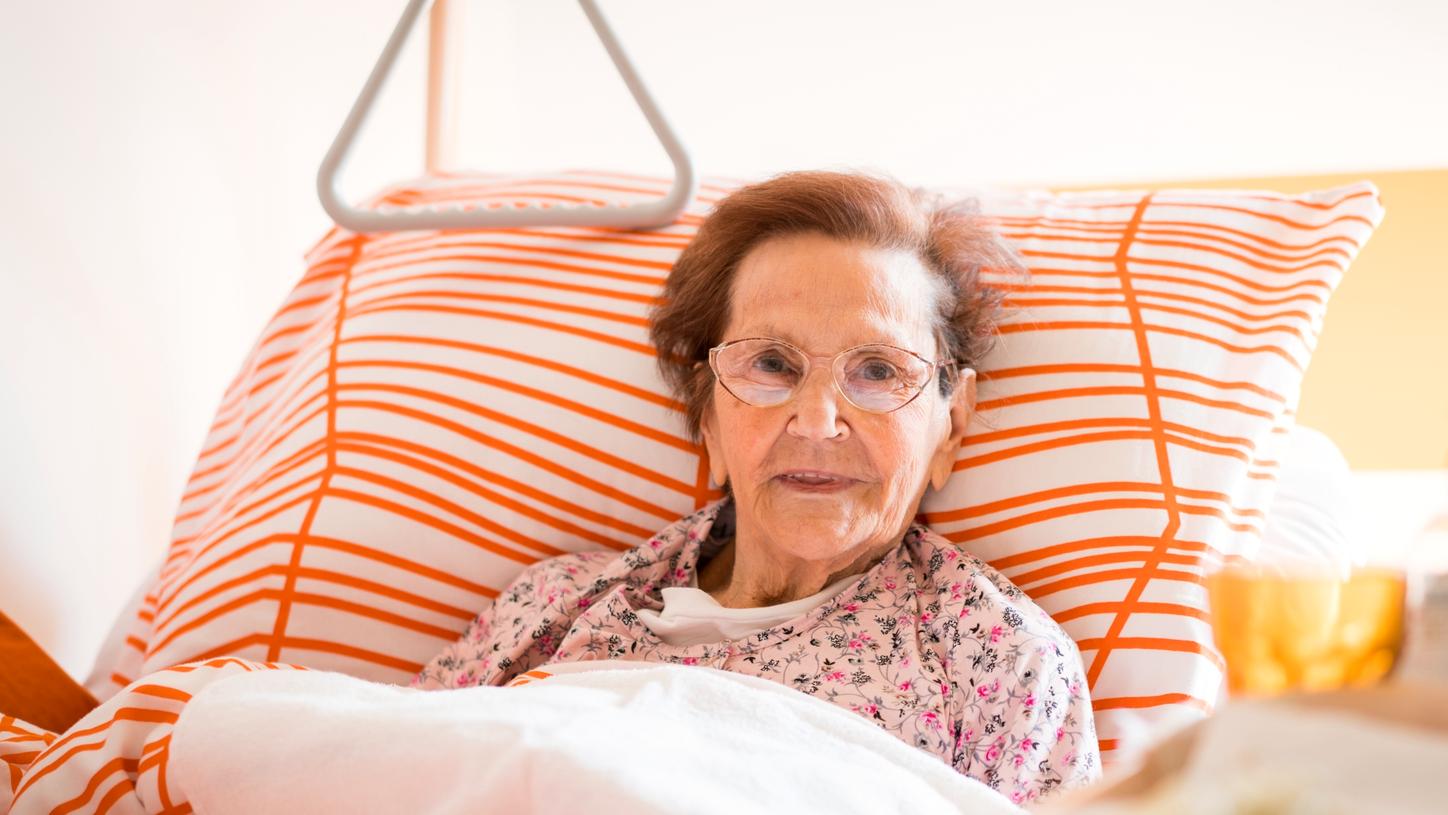Minimally invasive treatment of pelvic fractures is especially beneficial for older patients.

The Geriatric Trauma Center is part of the Department of Orthopedics and Trauma Surgery at Lucerne Cantonal Hospital (LUKS) and is a member of Traumanetzwerk Zentralschweiz (TNW) – a trauma network for central Switzerland headed by LUKS.
Using minimally invasive screw fixation to treat a pelvic fracture means that our patients can be walking with full weight-bearing just one day after surgery,” says Björn-Christian Link, MD, Joint Chief of Orthopedics and Trauma Surgery at Lucerne Cantonal Hospital (LUKS). For several months, Link has been treating his patients in a hybrid operating room at their Geriatric Trauma Center.
At the German Congress of Orthopedics and Traumatology (DKOU) in Berlin, Link reported on workflow improvements and highlighted the benefits of more speed and greater precision, particularly when it comes to treating older patients.
“Walking is critically important. If an older person can’t walk, they rapidly lose their already reduced muscle mass, their coordination ability, and ultimately also their vitality,” says Björn-Christian Link.
An accepted standard is to treat femoral neck fractures within 24–48 hours. Even today, the mobilization of patients with pelvic ring fractures, however, tends to be significantly delayed, Link explains. But why is this the case? “Due to the complex anatomy, pelvic ring fractures are operated on in centers with larger numbers of these cases, particularly when minimally invasive treatment is required. As a large hospital in the heart of Switzerland we are the only medical center that provides minimally invasive stabilization of the pelvic ring assisted by a robotic system,” says Link.

The hybrid operating room at the Geriatric Trauma Center is equipped with a robotic C-arm.
Photo: Lucerne Cantonal Hospital (LUKS), Lucerne, Switzerland
Pelvic ring fractures on the rise
The team at Lucerne Cantonal Hospital has established its own Geriatric Trauma Center. The center provides interdisciplinary treatment for patients aged over 70 years with a minimum of two relevant secondary diagnoses as well as any patient over the age of 80. “Over the last few years, we’ve been diagnosing an increasing number of pelvic ring fractures among older patients following a minor trauma.” The primary cause of this type of bone fracture among older people is believed to be osteoporosis or the result of vitamin D deficiency, long-term cortisone use, rheumatoid arthritis, or local irradiation. In Link’s experience, for an older individual a fall always carries a high risk of fracture. “Life expectancy is rising and so we’re having to treat an increasing number of patients for bone fractures,” says Link.
This is exactly where the holistic treatment approach of the Geriatric Trauma Center comes in.
“Our aim is for as many patients as possible to return home and resume normal life quickly after an accident.” Minimally invasive fracture treatment carried out in our hybrid operating room helps us to do this. The technology we use has made the OR workflow much faster and at the same time also guarantees that the safety and quality of the treatment the patient receives is of a high level. At the DKOU, Björn-Christian Link proudly presents a video of a 94-year-old patient who, just a few days earlier, had been operated on for a pelvic fracture. The recording shows the patient walking steadily, without the support of a mobility aid, along the hospital.

At the German Congress of Orthopedics and Traumatology, Björn-Christian Link, MD, describes the benefits of minimally invasive treatment of pelvic fractures in older patients.
Photo: Marco Leibetseder
New workflow saves time
“From a biomechanical perspective, when it comes to stabilizing a fracture of the posterior pelvic ring, percutaneous screws are the method of choice,” explains Link. With the hybrid OR, the screws can be correctly positioned in just three steps. First, an initial 3D scan is performed using a robotic C-arm. The integrated Needle Guidance tool then allows for the screw path to be planned with precision and the C-arm is automatically aligned to follow this path. A laser integrated in the image detector shows Link the planned path. Using this software application can help to minimize the screw positioning error rate. Link explains: “We quite deliberately opted for the additional Needle Guidance tool. It makes the procedure much easier as it allows us to see all three levels. The tool provides me with recommendations similar to navigation systems for traffic. In the end, whether or not I choose to take a certain street is still my decision. I personally always use the Needle Guidance tool when treating the posterior pelvic ring because it saves me a good deal of time and reduces radiation. I tend to plan for around half an hour per screw, but I’m usually a lot faster than that.”
Ultimately, this treatment outcome is ensured through intraoperative quality control using 3D imaging — a process that takes just five seconds. This step is particularly important for patients with multiple morbidities. The outcome is checked while the patient is still in the OR under anesthetic, so the surgeons don’t even need to order postoperative CT scans. This means they avoid exposing their patients to more radiation dose and possible revision procedures, which, in turn are associated with longer hospital stays and increased risk for patients.
“Minimally invasive screw fixation of a pelvic fracture means our patients are able to walk again just 24 hours after surgery.”
Establishing this hybrid room was the right decision
Björn-Christian Link has now been working in the hybrid OR for a good six months. Initially, it was mainly used by vascular surgeons. The plan was also for cardiologists and spine experts to use the facility. Today, the trauma surgery team is one of the main users and Link is aware “there are patients who come to us because they know we have the hybrid OR with the robotic imaging system. I’m totally convinced of the positive impact because whenever a technically better and safer option becomes available, it succeeds. I believe the use of a robotic imaging system like ours has huge potential benefits.”
Photo: Marco Leibetseder
About the Author
Andrea Lutz is a journalist and business trainer specialized on medical topics, technology, and healthcare IT. She lives in Nuremberg, Germany.

